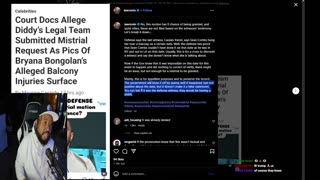Premium Only Content

Shingles (Why The Itch Is Hard To Treat)
PHI or Post Herpetic Itch is a serious complication of shingles that rarely do we hear about. That is because, among the complications of shingles, it is the one patients report the least to their providers. This is mainly because it is overshadowed by PHN in most patients. For those people with shingles, however, who develop PHI, it is one of the most challenging diagnoses, because it is difficult to treat. Recently, scientists have been able to decipher much of the etiology of this enigmatic condition, although the exact pathogenesis remains a mystery. With the new understanding of PHI, the treatment of this complication of shingles has received more effective treatments, albeit far from perfect ones. The realization that pathologic itch is a neurological condition has permitted the introduction of targeted therapy, yet this complication of shingles remains a challenge to treat. TTS-Trigeminal Trophic Syndrome directly results from shingles induced pathological itch, and providers and patients alike are fooled into thinking that chronic ulcers cause the often recalcitrant itching that follows bouts of shingles that precipitate this condition. The constant scratching that is precipitated by PHI can have serious consequences. Providers who treat patients with shingles need to be aware of this condition and its peculiar etiology, since many of the usual therapies will not work. When patients with shingles are aware of conditions such as PHI, they can ask questions and learn more about their condition. That way, they can take an active part in their care. Shingles can have serious complications and PHI is one of them.
TTS Image courtesy of : Kumar P, Thomas J. Trigeminal trophic syndrome. Indian J Dermatol. 2014 Jan;59(1):75-6. doi: 10.4103/0019-5154.123506. PMID: 24470665; PMCID: PMC3884933.
-
 7:20
7:20
Candid Conversations with Dr. Lowe
1 month agoCan Light Heal Your Body? The Science Behind Red Light Therapy Explained
114 -
 LIVE
LIVE
Akademiks
1 hour agoDiddy Trial Day 20: Jane Doe aka 50 Cent Baby Moms Cross Examine. ALLSTAR FREEKOFF Day 2/30
2,471 watching -
![Insurrection Incoming? No Kings Protests Sweep U.S. on June 14th - Corey DeAngelis; 3+ [ N A T U R A L ] Tips to Stay Healthy - Dr. Troy Spurrill | FOC Show](https://1a-1791.com/video/fww1/87/s8/1/t/r/X/R/trXRy.0kob.3-small-Insurrection-Incoming-No-Ki.jpg) UPCOMING
UPCOMING
Flyover Conservatives
11 hours agoInsurrection Incoming? No Kings Protests Sweep U.S. on June 14th - Corey DeAngelis; 3+ [ N A T U R A L ] Tips to Stay Healthy - Dr. Troy Spurrill | FOC Show
3.74K -
 LIVE
LIVE
NEWSMAX
2 hours agoThe Rob Carson Show LIVE (06/10/2025) | Call 1-800-922-6680 | NEWSMAX Podcasts
292 watching -
 LIVE
LIVE
Side Scrollers Podcast
1 hour agoCalifornia is LOST, YouTube LOOSENS Rules, YouTuber SHOT Over Beef + More | Side Scrollers Live
270 watching -
 LIVE
LIVE
Blockchain Basement
17 minutes ago🚨 $150,000 Bitcoin Rally! (Trump Trade Deal IMMINENT)
145 watching -
 LIVE
LIVE
LFA TV
15 hours agoLFA TV ALL DAY STREAM - TUESDAY 6/10/25
6,568 watching -
 UPCOMING
UPCOMING
The Shannon Joy Show
2 hours ago🔥🔥 Is Lockdown 2.0 Imminent? Trump’s Police State SURGES With Marines Deployed To LA. With Special Guest Dr. Kirk Moore🔥🔥
2341 -
 LIVE
LIVE
Grant Stinchfield
14 hours agoStraight Men Duped in Bedroom Betrayal and Cops Arrest the Straight Man!
128 watching -
 1:00:37
1:00:37
VINCE
3 hours agoHere Come The Marines | Episode 61 - 06/10/25
157K154